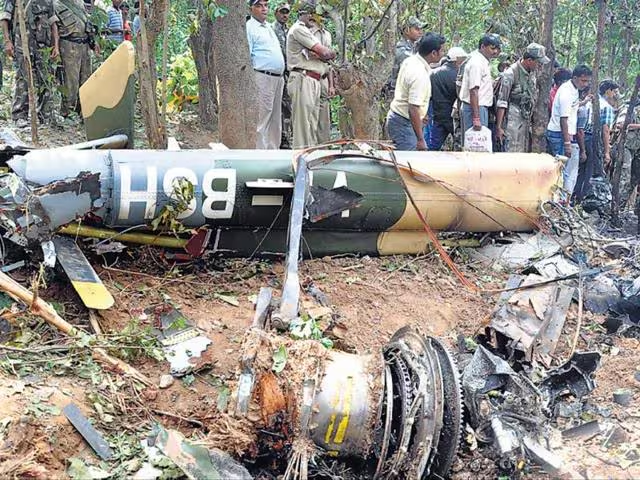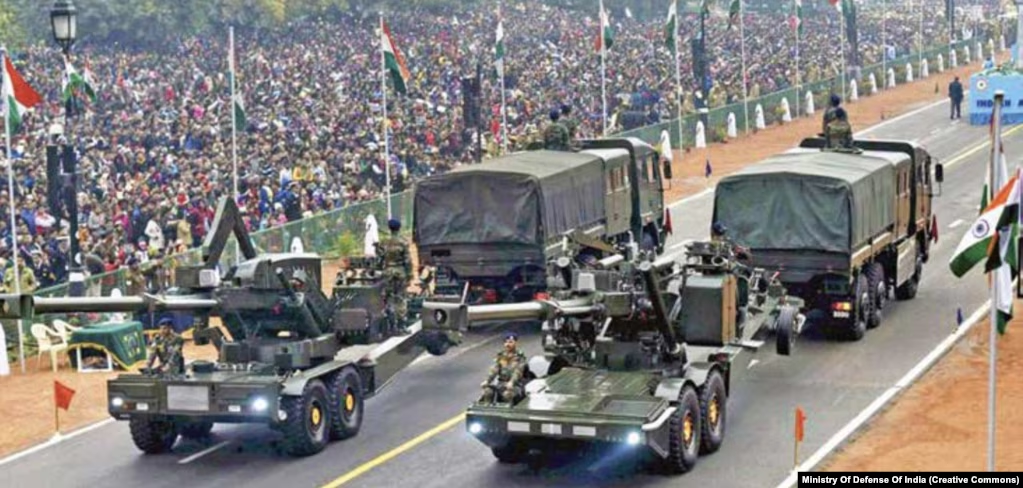
India supplies arms to over 85 countries, including Italy, the Maldives, Russia, Sri Lanka, the United Arab Emirates (UAE), the Philippines, Saudi Arabia, Poland, Egypt, Israel, Spain, Chile, and others.
India’s defence exports have reached the level of Rs. 21,083 Crore in the financial year. Defence exports have touched a record Rs 21,083 crore (approx. US$ 2.63 Billion) in the Financial Year (FY) 2023-24, a growth of 32.5% over the last fiscal when the figure was Rs 15,920 crore.
Poor quality and sub-standard military hardware
Buyers of Indian-made weapons identified multiple problems with the systems supplied by Indian manufacturers. The major problem with Indian equipment is design flaws, which are based on Soviet Union and Russian-designed equipment.
Most Indian equipment is either assisted by or technology supplied by Russia. India also received many absolute technologies from Russia, such as Akash SAM, based on the Soviet 2K12 Kub (SA-6 Gainful) missile system.
Outdated technology, corruption and mismanagement are three major problems in Indian defence industries.
Corruption in Indian defense industries
The Barak Missile scandal involved alleged defence corruption in relation to India’s purchase of Barak 1 Missile Systems. The Central Bureau of Investigation (CBI) investigated the case, and several people, including R. K. Jain, former treasurer of the Samata Party, were arrested.
The jeep scandal allegedly took place in 1948 when V.K. Krishna Menon, the Indian High Commissioner to the United Kingdom, ignored protocols and signed a Rs 80 lakh contract with a foreign firm to purchase army jeeps.
India’s defence procurement process has long been plagued by bureaucracy, secrecy, and corruption allegations. Corruption remains a persistent issue despite efforts to increase transparency and reform, such as introducing the Defence Procurement Procedure in 2002 and the Defence Acquisition Procedure in 2020.
These scandals involving Rolls Royce, BAE Systems, and the Choudhries emphasise the urgent need for enhanced transparency and vigilance in India’s defence and aerospace sectors. As the investigations progress, the revelations could have far-reaching consequences for defence procurement domestically and globally. This incident serves as a reminder of the challenges faced by India’s defence industry, highlighting the controversial role of intermediaries in procurement deals.
The Global Defence Anti-Corruption Index, to be announced by Transparency International on Wednesday, revealed that Chinese military spending has increased by 441 percent in the last decade, India by 147 percent, South Korea by 106 percent, Pakistan by 107 percent, Bangladesh by 202 percent, and Sri Lanka by 197 percent.
Indian Air Force grounded Druv helicopters
The Indian Air Force (IAF) has temporarily grounded its Dhruv advanced light helicopters (ALH) fleet.
The grounding comes after one of the helicopters crashed in a village in the state of Uttar Pradesh last week, killing all the seven personnel, including two pilots, onboard.

The Mark-III Dhruv took off from Bareilly on 25 July for a routine training mission and crashed in Sitapur district after losing radio and radar contact with ground stations.
The fleet will resume flying only after completion of a comprehensive inspection.
A design flaw may have led to the July 25 crash of an India-made Air Force helicopter that left its seven-man crew dead, initial findings of a probe have revealed.

HAL Druv grounded in Bolivia and Ecuador
Senior officials aware of the matter said on Wednesday that flaws in the Dhruv advanced light helicopter (ALH), whose safety record came under scrutiny after a string of accidents earlier this year, have been identified and are being fixed as a priority to address flight safety issues.
The Centre for Military Airworthiness and Certification (CEMILAC) has asked for a design review of a safety-critical system of the Hindustan Aeronautics Limited (HAL) built advanced light helicopter Druv helicopters following 12 crashes in several years in India and Bolivia.
Two Druv Helicopter crashes in Ecuador and Bolivia have injured at least 12 people, strewing debris across a residential area.
In the past five years, the ALH was involved in 12 accidents, including the crash-landing of an army helicopter in Jammu & Kashmir’s Kishtwar on May 4, in which a soldier was killed and two pilots were injured. Before that, a Coast Guard ALH forced a landing in Kochi on March 26, and a navy ALH ditched (emergency landing in water) into the Arabian Sea on March 8.
The two-man crew of an Ecuadorian air force Dhruv light helicopter escaped with their lives after crashing the Hindustan Aeronautics-built aircraft during a flight demonstration on 27 October.

The mishap occurred while the Dhruv was participating in celebrations to mark the 89th anniversary of the Ecuadorian air force, with the aircraft coming down on Mariscal Sucre airport near the capital Quito.

Hindustan Aeronautics Limited (HAL) placed an order to Saab Group to review the critical safety system of Druv Helicopter and produce the IDAS-2 self-protection suite for the Indian Army’s Dhruv helicopter. The order amounts to approximately MSEK 350. The order includes the IDAS-2 (Integrated Defensive Aids Suite), which will be produced at Saab’s facility in Centurion, South Africa. Deliveries will begin in 2019.
Brahmos failed the test in the Philippines
On 19 April, India delivered BrahMos missiles to the Philippines – the first batch of a US$375 million deal with Manila that will see New Delhi provide three batteries of the cruise missile to the Philippine Marine Corps. The agreement constitutes India’s most valuable defence-export deal to date.
India unsuccessfully test-fired an extended-range version of its BrahMos cruise missile. According to defence industry sources, the missile failed shortly after the flight, likely due to propulsion system malfunctions. Jointly developed by India and Russia, the BrahMos missile travels at supersonic speeds and has a range of 300 km. The extended-range variant being tested had an estimated range of 450 km.
The BrahMos supersonic cruise missile failed during a testfiring being carried out off the coast of the Philippines and fell shortly after takeoff.
The BrahMos supersonic cruise missile range derived its name from two rivers, the Brahmaputra in India and the Moskva in Russia.
Notably, a number of other versions of the supersonic cruise missile were earlier developed by BrahMos Aerospace under joint ventures between the Defence Research and Development Organisation (DRDO) of India and NPO Mashinostroeyenia (NPOM) of Russia.
Faulty ammunition exploded in Armenia
In August 2023, Armenia received its first shipment of India’s Advanced Towed Artillery Gun Systems (ATAGS). Yerevan has reportedly ordered 84 of the weapons for $155.5 million and was the first country to sell the newly developed artillery systems.

According to Armenian news, faulty ammunition supplied by an Indian manufacturer was the reason for the gun explosion.
India had signed a deal to export several weapons, including Pinaka multi-barrel rocket launchers (MBRL), anti-tank missiles, rockets and ammunition, to Armenia in September 2022. Last August, Armenia received its initial shipment of India’s Advanced Towed Artillery Gun Systems (ATAGS).

Yerevan had signed a deal worth some $41 million to purchase several Zen anti-drone systems. The units are designed to detect and then bring down enemy drones with radio scrambling or employ an air-defense gun for a “hard kill.” Armenain test shows that drones are passing over the anti-drone system without the anti-drone system reacting to the drone and engaging the drones.
Faulty Indian weapons lasted for just three months in Bangladesh
Bangladesh has identified several pieces of equipment that the Indian side is considering in different stages. These will be procured through the $500 million Line of Credit that India extended in 2018, which must be utilized by the end of April 2029.

The Bangladesh Army has given its approval for three platforms under the $500 million Line of Credit, and these include 11 Mine Protective Vehicles from the Tata Group at an approximate cost of US$2.2 million; seven portable steel bridges (Bailey) which will cost around $2.2 million; and five Bridge Layer Tanks (BLT-72) for approximately $10 million.

It also plans to procure bulletproof helmets, heavy recovery vehicles, armored engineer reconnaissance vehicles, Mahindra XUV 500 off-road vehicles, and other hard-top vehicles from the same company for around $2.35 million. Many other proposals are related to modernizing and extending the assembly unit for a machine tools factory.

A spokesperson from the Bangladesh army’s Inter-Services Public Relations (ISPR), speaking on the condition of anonymity, has revealed the dire consequences of the situation. They have stated that Indian equipment, upon which they heavily rely, frequently breaks down and becomes inoperable within a shockingly short period of just three months after receiving it.
Since Sheikh Hasina’s Awami League party came to power in 2009, she has acted to abide by New Delhi’s pressure to surrender Bangladesh’s sovereign interest even in the event of extremely hostile Myanmar.
India and Bangladesh commenced the annual joint military exercise SAMPRITI. Through these military exercises, Indian intelligence RAW was successfully recrui
© 2024, GDC. © GDC and www.globaldefensecorp.com. Unauthorized use and/or duplication of this material without express and written permission from this site’s author and/or owner is strictly prohibited. Excerpts and links may be used, provided that full and clear credit is given to www.globaldefensecorp.com with appropriate and specific direction to the original content.






Be the first to comment